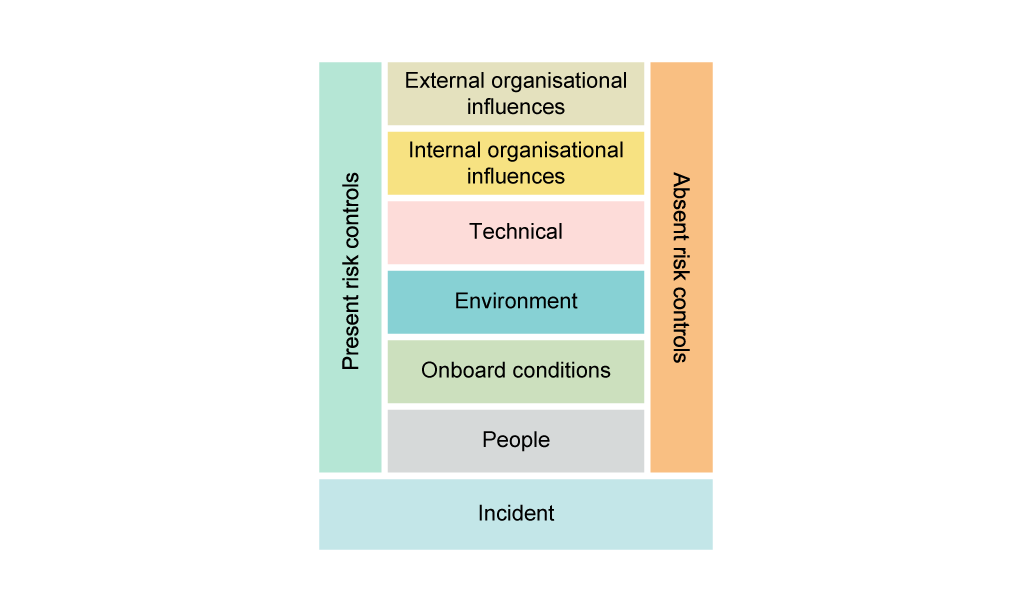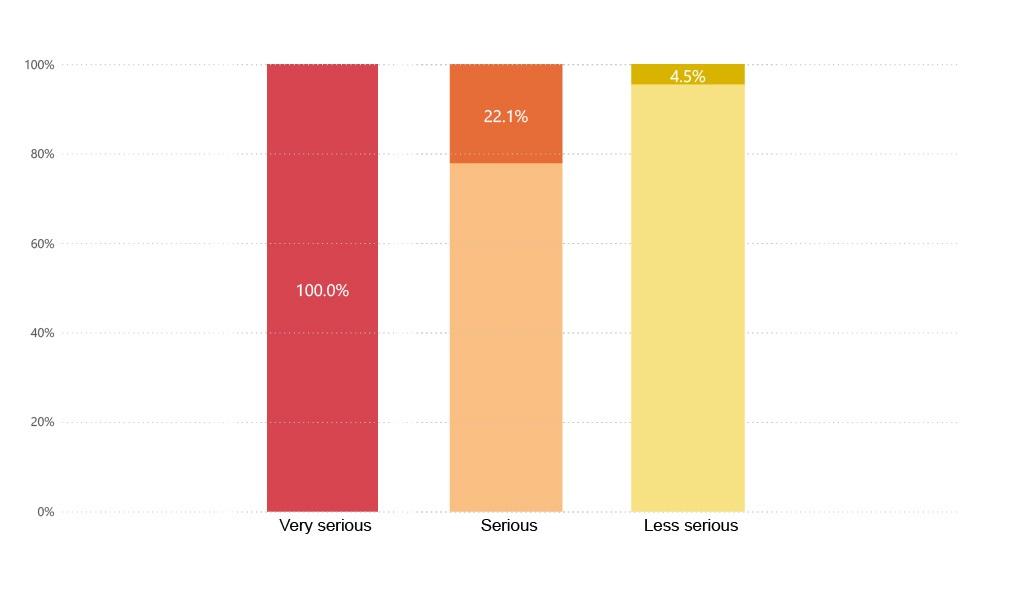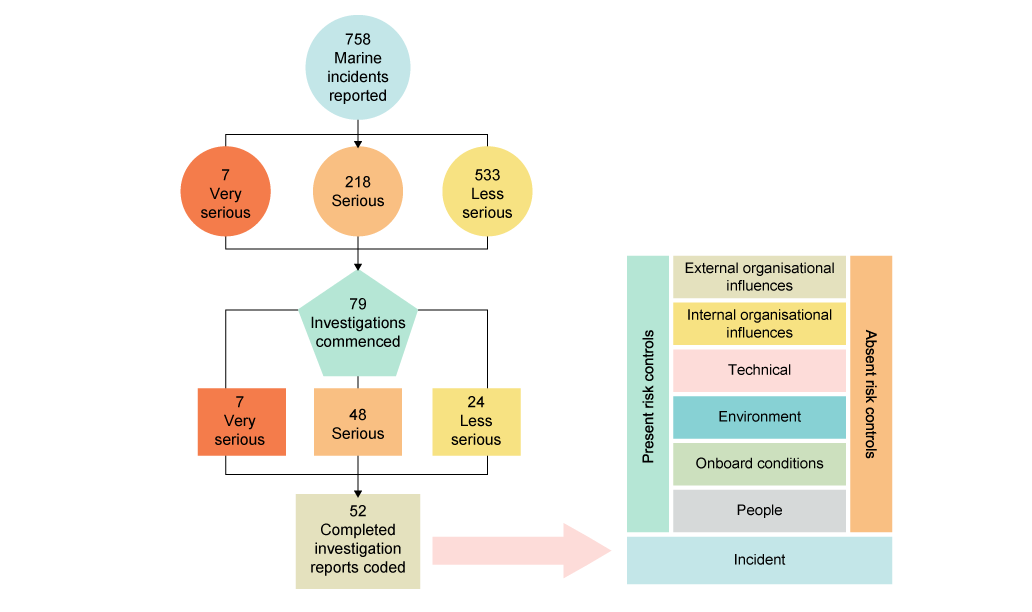In addition to classifying the types of incidents based on what happened, AMSA also reviews incident investigation reports to identify how and why the incident occurred. Marine incidents can be caused by many factors and underlying safety issues that often are not directly linked to the incident – such as organisational issues.
To ensure we capture these underlying safety factors, AMSA has developed an investigation safety framework (Figure 26) to classify investigation findings based on research and our data.
This safety framework helps in identifying the critical systemic factors that influence safety, taking into consideration the entire system that can impact the outcome, rather than just focusing only on the crew at time of incident. This allows for more effective safety improvements to be made by allowing the identification and targeting of underlying safety issues.
Safety framework
The safety framework is used for coding investigation reports within AMSA (Figure 25). It maps decisions and actions at six levels (people, onboard conditions, environment, technical/equipment, and internal and external organisational influences).
The safety framework shows that safety factors10 and risk controls (controls in place to manage safety risks) may be present across all levels of the system. When there is a breakdown across these levels, the marine incident is the final event, which sits at the bottom of the safety framework (Figure 25).
The identification of safety factors is important as it provides an indication of what contributed to the incident and allows for more targeted safety interventions to be developed.

| Primary Safety Factor | Description |
|---|---|
| Organisational Influences - External | This includes regulatory influences, class societies, port authorities, vessel traffic services, manufacturers and design of maritime systems on vessels. Organisational influences (external) include any decisions, actions and events or risk controls that may impact the safety of vessel operations which are performed by or implemented by organisations other than the vessel owner/operator. |
| Organisational Influences – Internal | Organisational influences (internal) include any decisions, actions and events or risk controls performed by or implemented by the owner/ operator related to the vessel, crew or cargo. This includes safety management system processes (risk assessment, maintenance, emergency procedures), organisational characteristics (skills of management personnel, internal communication), commercial influences/safety prioritisation and people management (crewing, supervision, training). |
| Environment | The environment includes surroundings and/or physical environment in which vessels operate that may have influenced decisions, actions, inaction or events. This includes the workplace (light, noise temperature, ship motion, etc); the physical environment and weather conditions (such as visibility, wind, sea/swell). |
| Technical/Equipment | Technical/equipment include any equipment or systems onboard that may have influenced decisions, actions, inaction or events. It includes any failures in the structural integrity, electrical, mechanical and warning detection systems. |
| Onboard Conditions | Onboard conditions include any conditions onboard the vessel that may have influenced decisions, actions, inaction or events. These include personal factors (fatigue, drug/alcohol, health conditions, physical limitations, stress/anxiety); Knowledge, skills and experience; task demands (workload, pressure, distractions) and the social conditions. |
| People | Crew decisions, action and/or inaction that increased risk. |
Investigations coded using the safety framework
AMSA reviews all incident reports it receives and responds according to the principles outlined in the AMSA Compliance Strategy 2018 - 2022. In 2020, AMSA commenced a total of 79 formal investigations.
After conducting preliminary inquiries, a decision may be made to conduct a formal investigation. Some considerations for commencing an investigation include: the existence and extent of fatalities/serious injuries and/or structural damage; the anticipated safety value of an investigation; the likelihood of safety action arising from the investigation and the relevance to an identified and targeted safety campaign. In 2020, 100% of very serious; 22.1% of serious; and 4.5% of less serious incidents resulted in the commencement of a formal investigation.

Of the 79 formal investigations commenced in 2020, 52 include an investigation report which were coded using the safety framework.

Footnotes
10 Safety factor is defined as an event or condition that increases risk.